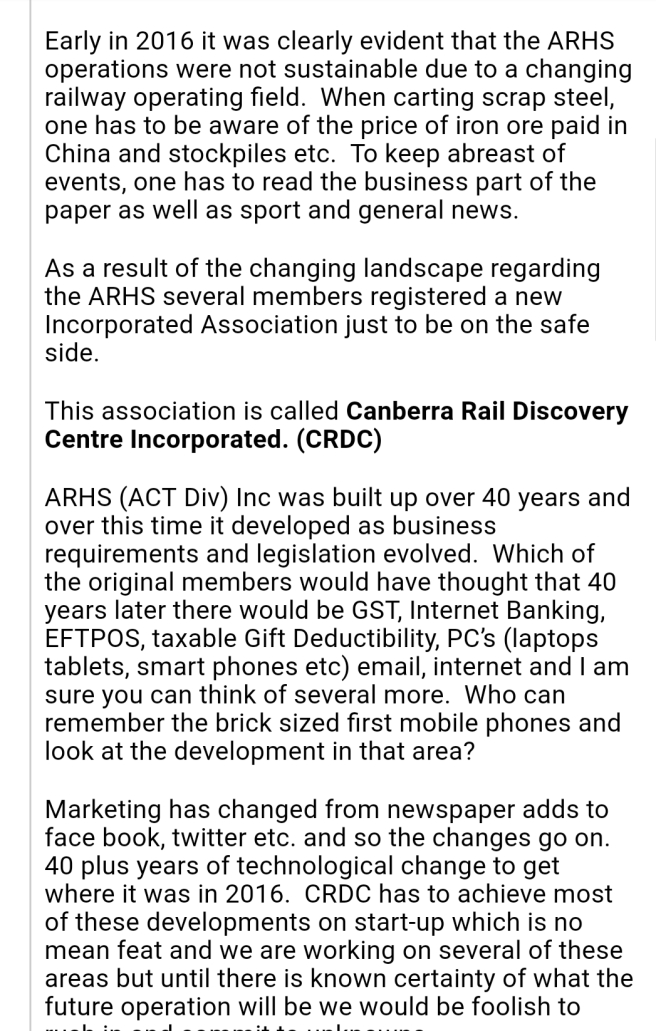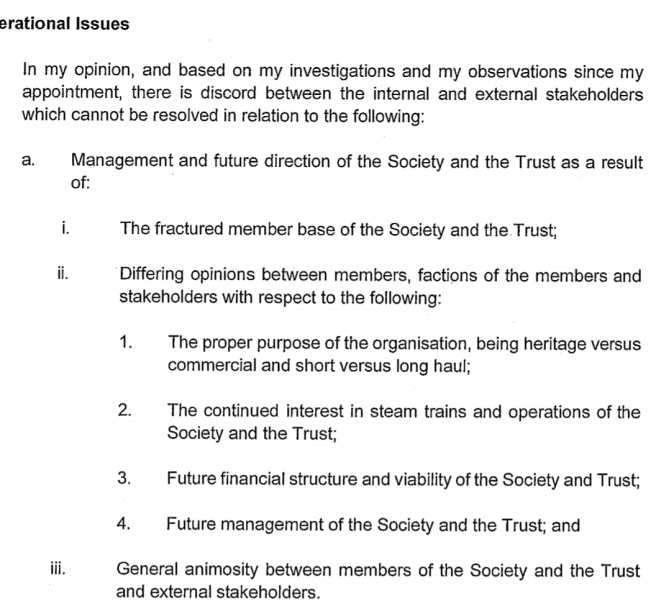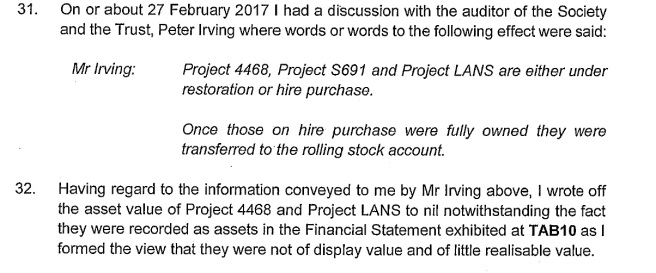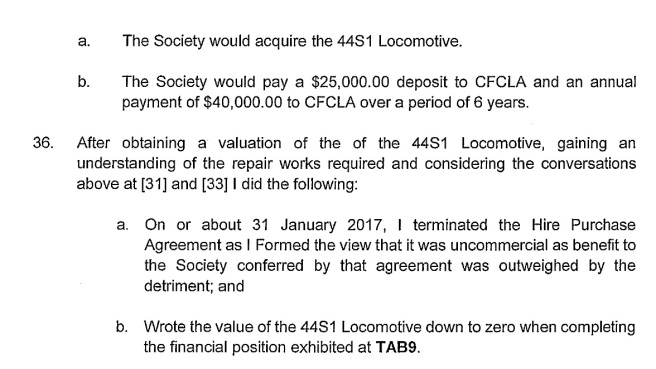Below is the first analysis on the Deloittes Letter of Service regarding ARHS ACTs collapse. This post primarily deals with some of the financial findings with further input after questions to ARHS Members, Former employees and council members.

The liquidators have reached this conclusion after extensive forensic financial auditing of financial records going back 24 months from November 2016. In short, this has been a long term systemic failure with the likely result of ARHS’s members never really getting a true picture of how the business was travelling. Indeed, a comment among many on the ground volunteers during the period when ESPEE (The commercial freight arm) was operating freight trains on a regular basis was “Where is the money going?”
In the last 24 months, ARHS had 2 paid employees dedicated to financial work- A full time professional paid bookeeper, and a part time ‘corporate services manager’ (Self titled, but person performing the role was a Tax Agent with considerable experience). Additionally, working above them was the organisations CEO and at board level, an honorary treasurer. The accounts were also audited annually by an independent professional chartered accountant. So the question is, with that many people dedicated to the financial side of what was by definition, a small-medium business, how were the books determined by Deloittes to be ‘largely inaccurate’ and where were the errors being made?
Furthermore, conversations with a number of Council members and employees from the period March-October 2016 revealed an almost complete lack of transparency with regard to information regarding finances. An example is that the operations manager at the time was unable to obtain data on ticket sales to support his costing models for heritage operations- Ie, he had no idea whether trips such as the Western Safari, Gosford and Wollongong weekends were coming in under, on or over budget. This situation is widely acknowledged by all as having changed when the treasurer changed in September at which time the desperate situation became clear. It is also worth noting that both the bookkeeper and “Corporate Services Manager” resigned their positions not long after.

On the face of it, this seems extremely dubious and begs the question of how on earth it went backwards so quickly. The answer to this is relatively simple though as from Jan 2016 to its winding up in October, the ESPEE business essentially collapsed due primarily to the loss of its one significant contract, the ACCESS scrap metal train, in January. From that point on, ESPEE could only pick up adhoc work like railsets, ballast trains and crew hire, significantly undermining the income stream of the Society. Furthermore, according to a number of former employees, they had been employed by the then CEO on the basis of the Access contract and the financial security it supposedly gave.
All this would not have been a significant issue if the ARHS had enough redundancy in its business model (such as through heritage operations) to cover such an eventually as a contract loss. Due to limited resources and an overly optimistic attitude from both the council at the time and the CEO regarding plans for the future, it didn’t, nor was there a plan for scaled reduction in employee numbers or financial planning around forced redundancy costs. In essence, all the eggs were in one basket.
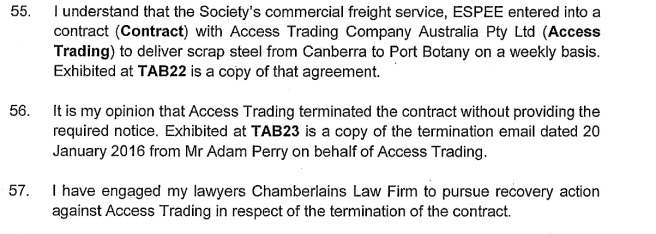
The termination of the aforementioned Access Contract is mentioned specifically and, according to a number of the 2016 Council members, the information that it had been actually terminated by ACCESS was unknown to them. For the liquidator to be pursuing ACCESS on the matter of termination clearly indicates that it is felt there is a more than reasonable case that the termination was not in line with the contract. The employee in charge of ESPEEs operations, expressed during members meetings and social functions that ACCESS were simply waiting on approval to expand their Fyshwick site as an explanation that the train was not operating. Clearly, someone knew and kept that information from members and the other employees. The effect, whether deliberate or not, was that members and employees acted on the belief that the revenue stream would be restored and this was simply a dry patch, something familiar to the Society.

The mere fact that the Society ran up this debt with the Tax office beggers belief and serious questions must be asked as to how this occurred, as an accurate tax component (Tax rates being known and defined figures) should have been built into all costing models, be it heritage or commercial. It would seem almost as if at some point ARHS simply stopped paying.

This is significant as it places a financial payment default prior to the November 2015 meeting at which the vote of no confidence was carried against the then council. At no stage during that meeting was it disclosed to the membership that the Society had defaulted on the plan, nor was it disclosed in the handover to the new council of January 2016. Indeed, a creditors\debtors list (shown to the author by a member of said council) submitted at one of the early meetings of the new Council is missing any reference to a debt in excess of $59,000.
The above details are merely the start. However, there are already clear indications pointing to people (be they elected or employed) be out of the depth when it came to running a business. When the going was good, few questions would have been asked and many assumptions made. Once it turned though through the loss of a single contract, the cracks started and the flaws in the systems became well and truly apparent.
More to come.





